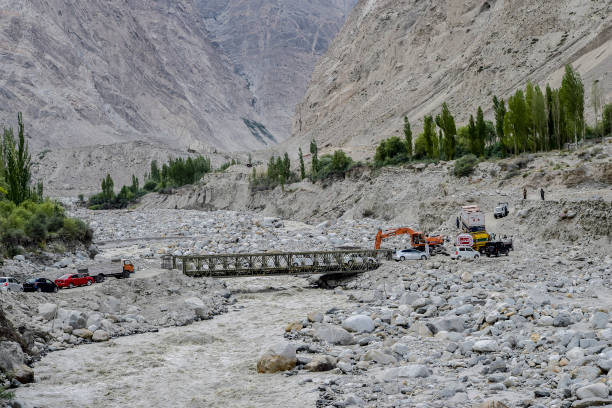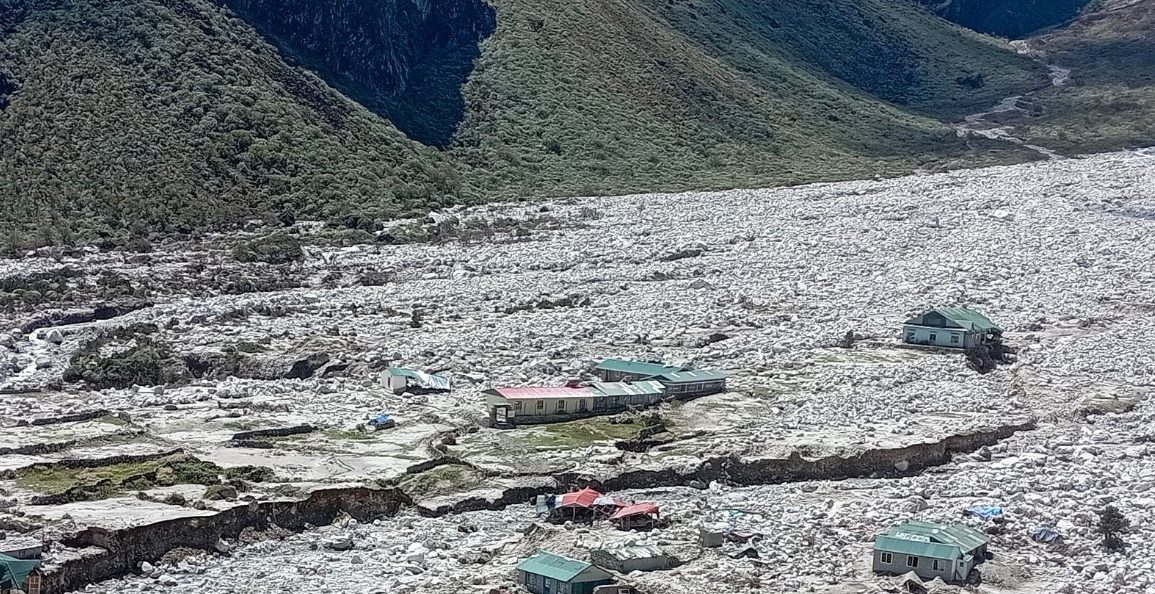Mingma Rita Sherpa wasn’t home when a torrent of muddy water engulfed his village in Nepal’s Thame, but when he returned, nothing remained. “There is no trace of our house… it took everything we owned,” he said.
The disaster in Thame, near Mount Everest, is a grim example of the devastating impact climate change is having on the Himalayan region.
Nepal is experiencing its worst flooding in decades, with monsoon rains killing at least 236 people across the country.
Thame was submerged in August when a glacial lake burst due to melting glaciers accelerated by climate change.
Glacial lakes are formed as glaciers retreat, and they pose serious risks as they are often held together by fragile debris or ice.

The phenomenon, known as a Glacial Lake Outburst Flood (GLOF), released freezing floodwaters that destroyed half of Thame’s homes, a clinic, a hostel, and even a school built by Tenzing Norgay Sherpa and Edmund Hillary, the first climbers to summit Everest.
“Some are trying to rebuild, but the land is not stable,” Sherpa said. Local authorities are assessing whether to rebuild or relocate residents, with the risk of further flooding still looming.
Climate scientists warn that the flood is part of a broader pattern as hundreds of glacial lakes have formed across Nepal.
Experts emphasize the need for increased monitoring to predict such floods and prepare communities.
“The risks are there, and our mountain communities must be made aware,” said ICIMOD geologist Sudan Bikash Maharjan.
The once-proud mountaineering village of Thame faces an uncertain future. “The Himalayas have changed,” said veteran mountaineer Kami Rita Sherpa. “We are living at risk—not just Thame, but many villages downstream.”

